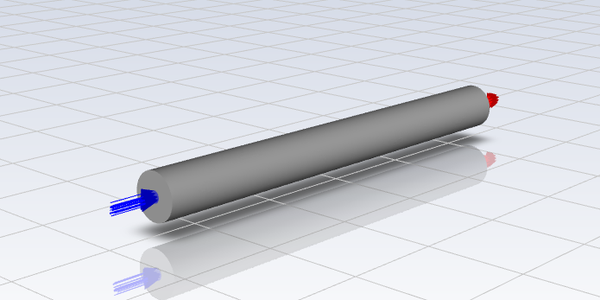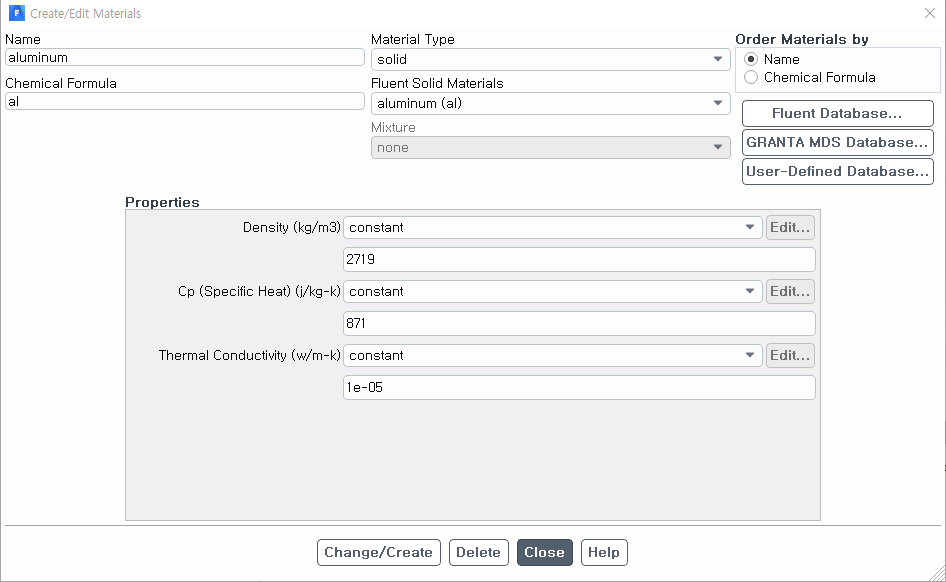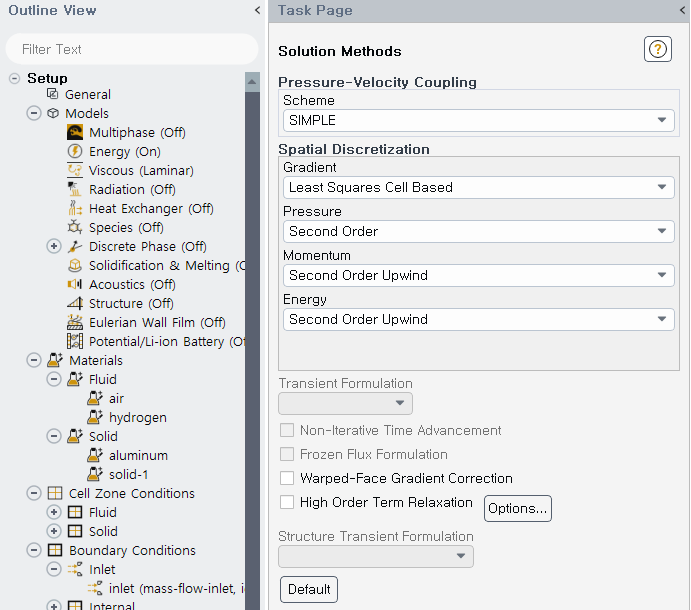TAGGED: fluent
-
-
March 18, 2024 at 11:54 am
Xianyou Zhu
SubscriberThe simulation model is a simple jacketed tube model.
The flowing fluid is air, which is available in fluent by default, and the jacket material is aluminum which is modified the thermal conductivity of the initial aluminum to 1e-5 W/m K.
The inlet is set as mass flow inlet (4.02577e-9 kg/s, 26.8 K) (velocity is about 4e-5 m/s) and the outlet is pressure outlet.
The boundary temperature of tube is set as 300 K.
The flow state in the tube is laminar.
The calculations all converged, but the gas heat absorption (m cp T), calculated from the temperature difference between the inlet and outlet, is in significant error(about 200%~300%) from that calculated from the intrusion of heat flux at the tube wall (q" A).
-
March 18, 2024 at 1:26 pm
Federico
Ansys EmployeeCan you provide some details on your calculations?
-
March 18, 2024 at 1:51 pm
Xianyou Zhu
SubscriberHere is the geometry of the simulation model. The outer diameter is 40 mm, and inner tube diameter is 10 mm. the length of tube is 400 mm.

The materials of fluid and solid.The settings for models and solution method are shown below:
The heat flux used in calculation (q”) is from “Report definitions-surface report-area weighted average-wall fluxes-total surface heat flux”.
-
-
March 18, 2024 at 1:40 pm
Xianyou Zhu
SubscriberHere is the geometry of the simulation model. The outer diameter is 40 mm, and inner tube diameter is 10 mm. the length of tube is 400 mm.

The materials of fluid and solid.The settings for models and solution method are shown below:
The heat flux used in calculation (q”) is from “Report definitions-surface report-area weighted average-wall fluxes-total surface heat flux”.
-
- The topic ‘Under low velocity, there is difference between hand calculation and simulation’ is closed to new replies.



-
4628
-
1535
-
1386
-
1215
-
1021

© 2025 Copyright ANSYS, Inc. All rights reserved.











